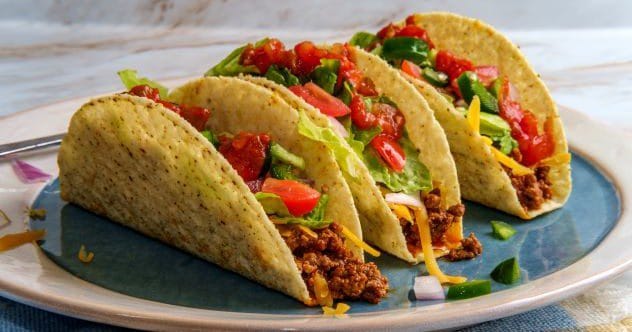We all love to eat, and many of us enjoy cooking. While we generally have a good grasp of how food works, misconceptions about certain recipes, especially those from other countries, are common. Some ingredients also have surprising aspects that most people aren’t aware of. Let’s dive into some interesting food facts!
Ricotta Isn’t Traditional in Meat Lasagna
In America, lasagna often features layers of meat sauce, mozzarella, and ricotta cheese. Some even substitute ricotta with cottage or cream cheese, sparking heated debates about who’s right. However, traditional Italian lasagna consists of noodle layers, meat sauce, mozzarella, and béchamel sauce.
Italian restaurant owners adapted their recipes to suit American tastes, explaining the difference. While you might find ricotta lasagna in touristy Italian restaurants catering to Americans, traditionally, béchamel is used. Feel free to make it your way at home, but for a traditional experience, skip the ricotta and oven-ready noodles.[1]
Peanut Butter: American Staple, Not Carver’s Invention
Peanut butter, especially in a PB&J, is a quintessential American food—sweet, savory, affordable, and customizable. While the Incas might have created a version centuries ago, the modern form was reinvented in 1895 by John Harvey Kellogg.
Despite popular belief, George Washington Carver didn’t invent peanut butter. However, he discovered over 300 uses for it, including shampoo, shaving cream, and glue. This extensive exploration makes him one of history’s greatest inventors.[2]
Light Roast Coffee Packs More Punch
Many people reach for dark roast coffee when they need an extra boost, but lighter roasts are actually stronger. This is because lighter roasts retain more mass since they’re not burned as much.
Beware of coffees promising extreme strength, often marked with health disclaimers. These companies may be overcharging you for blends containing low-quality coffee. High-quality coffee beans are typically 100% Arabica. Robusta beans, though stronger, have a bitter taste and lead to a terrible crash.[3]
Tea Time: Why the British Pair Tea with Food
The British tradition of drinking tea with biscuits (cookies) in the mid-afternoon is envied by many. It seems like a delightful way to break up the day, but it’s more than just a love for sweets or a display of wealth during the British Empire. Black tea contains tannins, also found in red wine, which can cause nausea if consumed on an empty stomach.
The British pair their tea with sweets to counteract the bitterness from the tannins.[4]
Hard-Shell Tacos Are an American Invention
In America, hard-shell tacos are incredibly popular, found in grocery stores and heavily promoted by places like Taco Bell. The combination of crispy shell and soft fillings is satisfying to many Americans. However, Mexicans typically don’t eat hard-shell tacos.
Hard-shell tacos began gaining popularity in the U.S. in the early 1900s and have remained popular since. In authentic Mexican restaurants, you’re unlikely to find hard-shell tacos. Also, Mexican tortillas are usually made from corn, unlike the flour tortillas common in the USA. A Mexican traveler would likely be puzzled by the American version of their food.[5]
Potato Skins: A Nutritional Goldmine
Potatoes are popular worldwide, particularly in America, where they accompany almost every meal. However, many American recipes instruct you to remove and discard the skin, which is a nutritional mistake.
Removing the skin eliminates much of the potato’s goodness. Approximately 50% of the vitamins and fiber are in the skin. By peeling potatoes, you’re throwing away half of their nutritional value and creating extra work for yourself.[6]
Pasta Carbonara: Simple, Not Creamy with Peas
American pasta carbonara, often called chicken carbonara, is an American dish found in Italian restaurants across the U.S. Many recipes include eggs, parmesan cheese, cream, bacon, chicken, and peas, resulting in a dish that would shock an Italian. This version is so different it deserves its own name.
Traditional pasta carbonara is designed to be simple, using ingredients readily available in the pantry. A traditional carbonara consists of eggs, pecorino romano cheese (not parmesan), pasta, guanciale, and black pepper. While bacon can substitute guanciale, chicken, cream, and peas are never part of the recipe.[7]
Fortune Cookies: More American Than Chinese
Fortune cookies are often seen as an essential part of finishing a Chinese meal. However, fortune cookies are as American as apple pie. They were invented by a Japanese-American man from San Francisco in the early 1900s.
These cookies are manufactured entirely in America, with Wonton Foods Inc. producing 4.5 million daily in their Brooklyn factory. Chinese restaurants worldwide serve fortune cookies, except in China, where they aren’t eaten at all. When Wonton Foods Inc. tried to sell them in China, customers often ate the fortune by mistake due to unfamiliarity.[8]
Pineapple Bites Back
Pineapple is a beloved fruit worldwide, known for its unique taste and tingling sensation. The reason for that tingle is bromelain, a defense enzyme that attempts to eat you back as you eat it.
That numb feeling is the enzyme trying to deter you from eating the pineapple. Bromelain can be so effective that it can relieve mild toothaches or pain after wisdom teeth extraction, though it isn’t a substitute for a dentist.[9]
Pudding: From Savory Meat to Sweet Treat
British cuisine often features the term “pudding,” covering both savory and sweet dishes. In early England, people boiled meat in an animal’s stomach, calling it pudding. Over time, grains were added, and the dish evolved into recipes with more grains, eventually including sweet versions. This history explains why many foods in England are referred to as puddings.[10]
These food facts challenge common knowledge and offer a new perspective on what we eat. From the origins of fortune cookies to the real ingredients in pasta carbonara, it’s clear that there’s more to food than meets the eye.
Share your thoughts or favorite food fact in the comments below!










